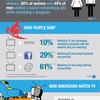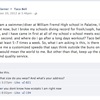When it comes to social media, there’s probably nothing more annoying than spam accounts. Twitter is infamous for its direct message spams (which, by the way, you know to never to click to see “what U R doing in this video OMG” … right?) and its abundance of accounts with no real substance to them. TMC’s CEO, Rich Tehrani, recently blogged about a new service called fakefollowers that allows Twitter users to see how many of their followers are of high quality, or “real.” The service determines the accounts legitimate or not based on the following/followers ratio, repeat spam phrases, repeated Tweets, number of retweets, number of links and more.
According to Mark Risher, chief executive officer of anti-spam software company Impermium, spammers are responsible for creating as much as 40 percent of the accounts on popular social media sites like Facebook and Twitter. Roughly 83 million accounts on Facebook are fake. Of that, 4.8 percent are duplicate accounts, 2.4 percent are user-misclassified and 1.5 percent are “undesirable” accounts. Facebook bans at least 20,000 accounts daily. Roughly 8 percent of messages sent on social networks are spam, and that number had doubled as of May 2012, which means it’s more than likely it’s gone up even more since then.
Pinterest is one social media site determined to get rid of these spam accounts. Users have complained about hacked accounts as spam was integrating into their Facebook and Twitter accounts. Since users often link the social networks together for cross-posting purposes, it’s easier for spam to leak in to the different sites.
“Keeping Pinterest authentic is vital to helping people discover the things they love. That’s why we’ve built a dedicated spam team that has been hard at work investigating reports and building systems that detect, remove and prevent spam,” the company said in a recent blog post.
Starting yesterday, Dec. 6, Pinterest started removing suspicious, fake or spammy accounts for good. For more than 90 percent of Pinterest accounts, it will be a loss of less than 10 followers. However, according to Pinterest, spammers tend to focus their attacks, and most of the bad accounts are following a relatively small number of legitimate accounts.
Image via Pinterest
Pinterest is taking everything it has learned from these spam accounts to implement new measures that will help keep bad accounts from being created in the first place. Its blocking and reporting features are one way to fight spam accounts.
Spam accounts can be more than just a nuisance. A story in Bloomberg Businessweek gave an example of Michelle Espinoza, a jewelry designer, who thought one photo was going to ruin her business. For 10 days in April, when anyone clicked on one image of her pearl cuff bracelets they were redirected to porn sites or downloading viruses. Hopefully the new action Pinterest is taking will help severely cut down on the annoyance of spam accounts on the social sharing site.











